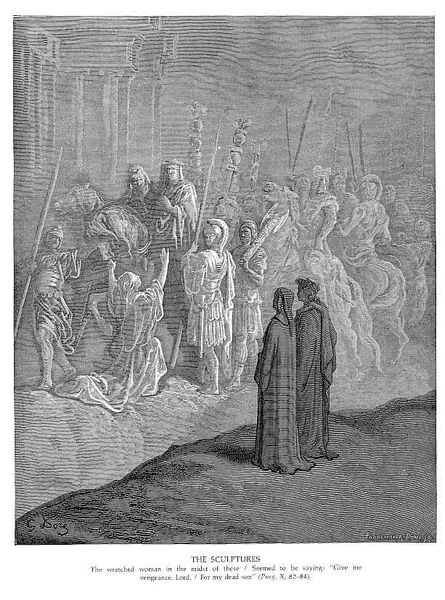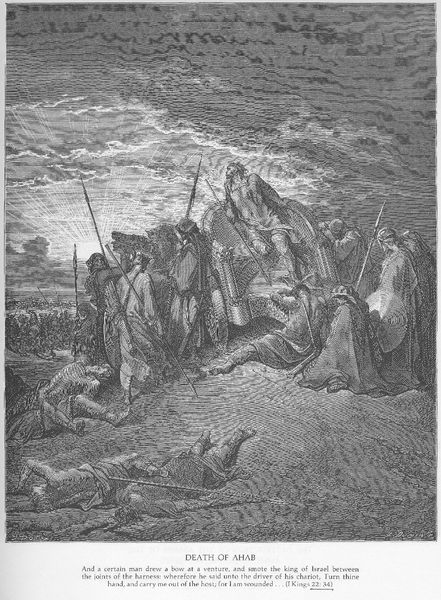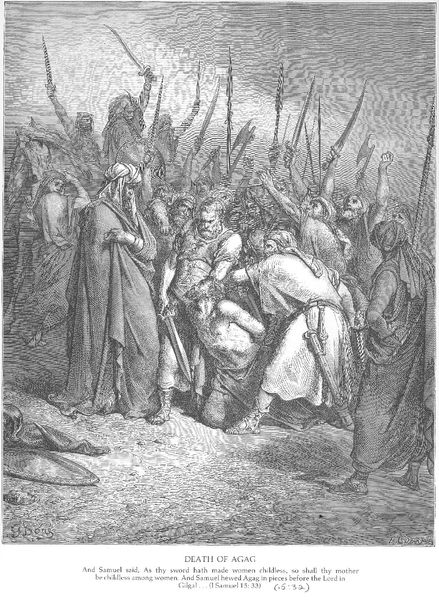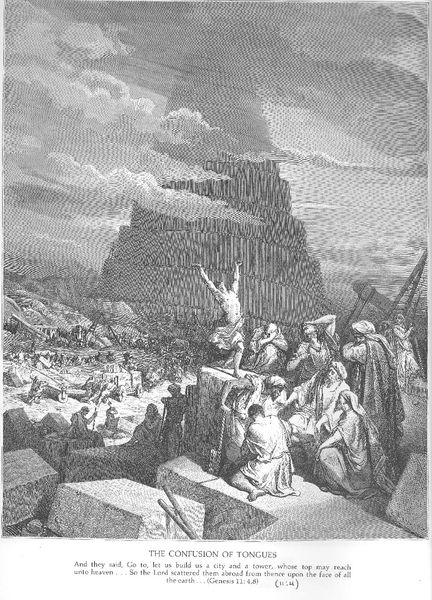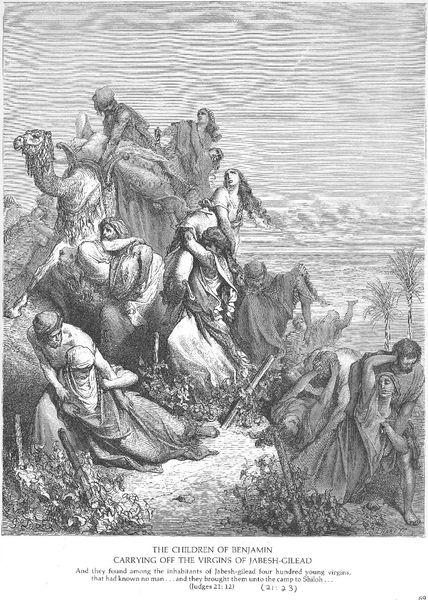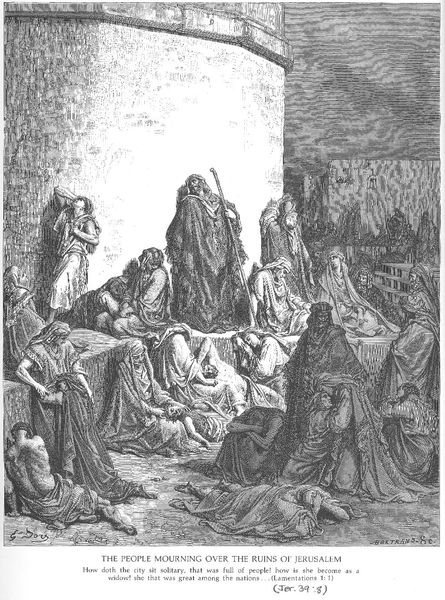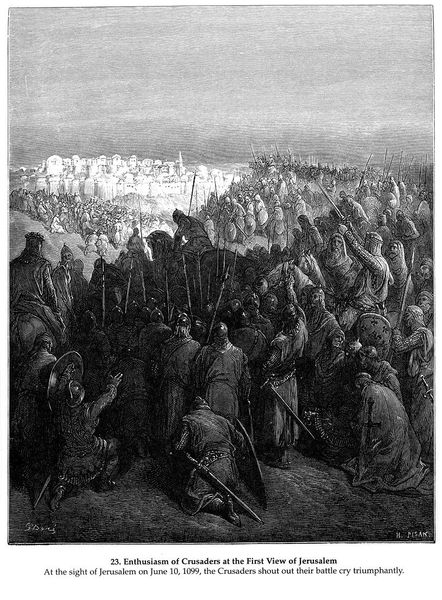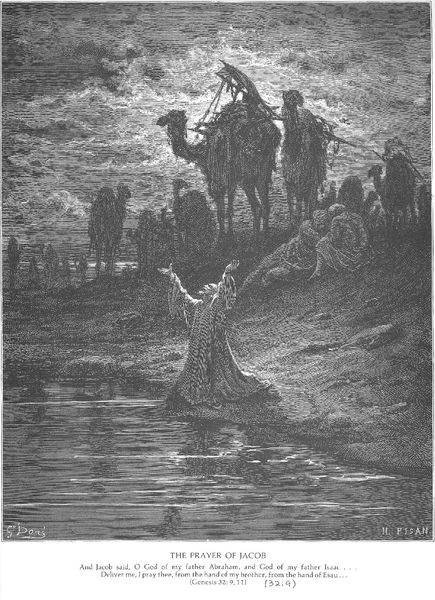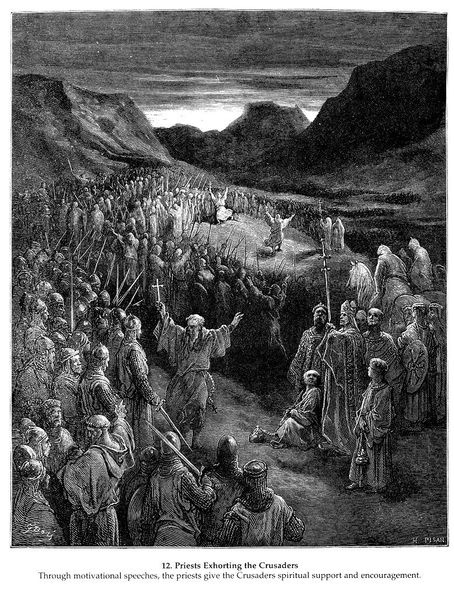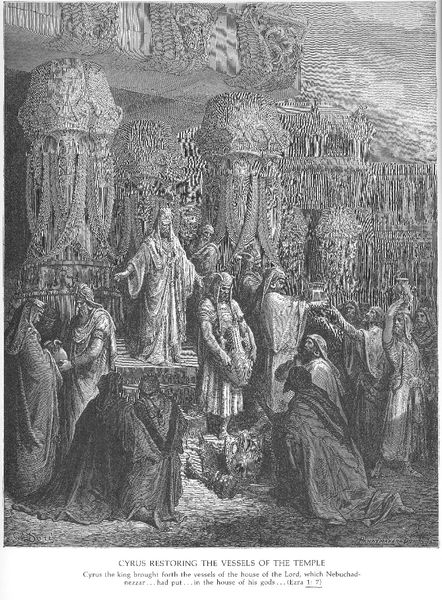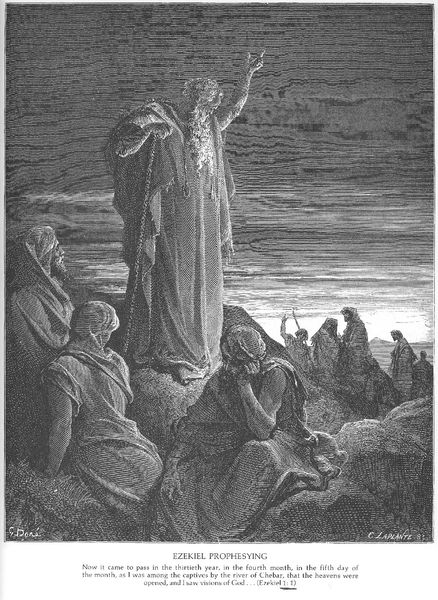
drawing, print, engraving
#
drawing
#
medieval
#
narrative-art
# print
#
landscape
#
figuration
#
christianity
#
line
#
pen work
#
history-painting
#
academic-art
#
engraving
Copyright: Public domain
Curator: This image depicts the return of the spies from the Promised Land. Gustave Dore's rendering of the biblical scene captures a potent moment of both abundance and trepidation. It is rendered as an engraving. Editor: My immediate impression is of something epic, almost operatic. There's a grand sense of scale despite it being a monochromatic engraving. The landscape itself feels like a character, looming and weighty. Curator: The symbols are certainly hard to ignore. Consider the giant grapes, an obvious stand-in for bounty but also possibly overstatement—two men straining to carry a single bunch. The fruit, borne from this place is larger than anything seen before. It carries a very distinct symbolism that communicates a deeper layer of reality beyond just physical observation. Editor: Exactly! And that excess carries its own weight. The promise fulfilled, yet also almost impossible to bear. This speaks volumes about the complex narratives of colonialism, right? This image embodies how resources of a new space or land might seem alluring, but the human cost or practical execution become daunting. Curator: Indeed. And it fits well into the long iconographic tradition of portraying the Promised Land. We should consider, too, Dore's position in history and his specific moment in relationship to this image. One can also consider how different elements of nature communicate with humanity’s emotional resonance. It can symbolize divine favor, human capacity, and our reliance on things that transcend our existence. Editor: Yes, Dore uses this biblical moment to underscore the relationship between colonizer and the land they seek to occupy, whether for sustenance, material wealth or to extract and conquer. The burden carried can also represent the complex dynamics that often include the exploitation of indigenous people or inhabitants who existed within the land being occupied, and is something that carries on into present-day socio-political and global debates. Curator: A truly remarkable confluence of biblical narrative and enduring symbolic weight! The image certainly offers more than what the story implies. Editor: Absolutely. By bringing the context of colonialism and modern history, the image reveals uncomfortable truths about our relationship to land and power.
Comments
No comments
Be the first to comment and join the conversation on the ultimate creative platform.
